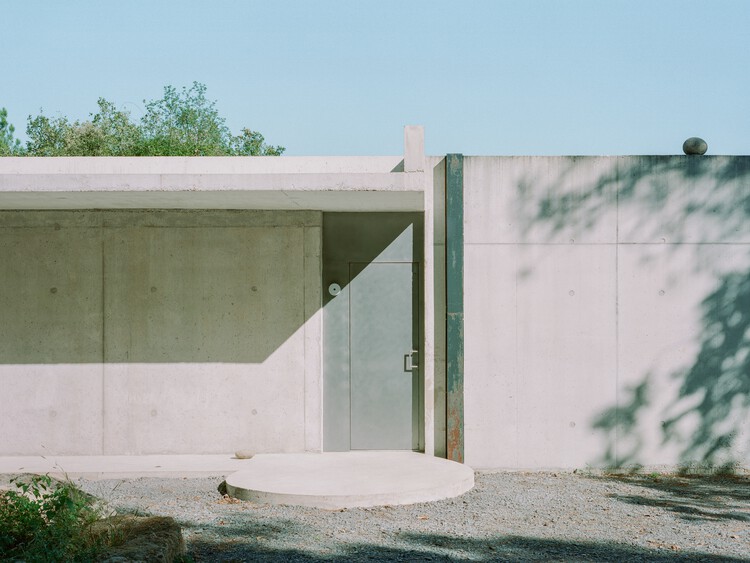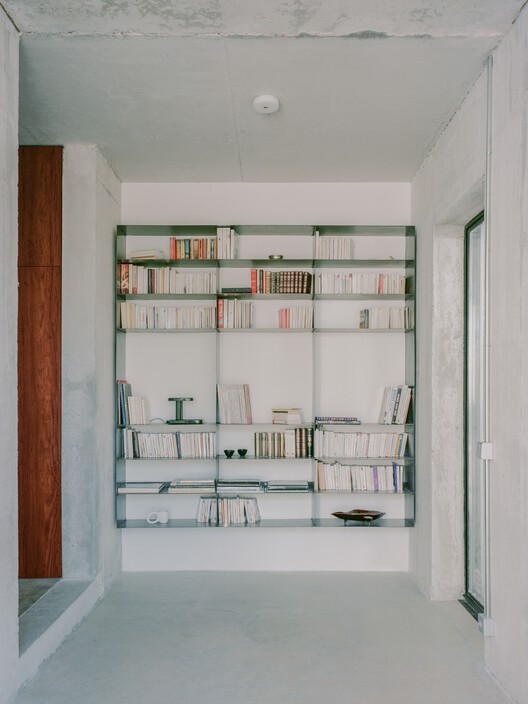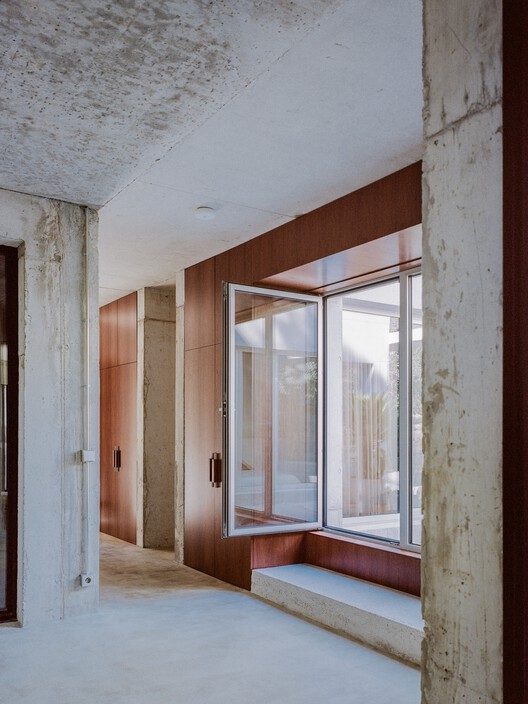
-
Architects: Alors Studio
- Area: 80 m²
- Year: 2023
-
Photographs:Lorenzo Zandri
-
Manufacturers: FLOS, Schüco
-
Lead Architects: Baptiste Fleury, Camille Marchal

Text description provided by the architects. Les Blanches de Payzac is located in a tiny village in the south of Ardèche, where traditional construction still predominates. The existing house, originally built in 2007, contrasts with this vernacular architecture. Setting up in a privileged and isolated plot, the house weaves a close and strong relationship between nature and architecture. Voluntary facing the grand landscape, its oversized glass windows offer generous views towards olive trees, stone pines, and aromatic plants while its concrete facades remind rocks of the surroundings and the tradition of retaining dry stone walls that compose this beautiful and contrasted landscape.


Formerly built to be a holiday house, its plan is composed of three independent units hosting the different functions of the house and connected only by an exterior path. The project of extension intends to provide a more functional use of the house daily. The project establishes a new entrance and connects, through a long corridor the two main existing blocks. Taking advantage of this new distribution, the project develops additional interior spaces along this corridor.



Two new bedrooms and a bathroom are added while a reading space is taking place in the void filled in by the intervention. Taking place in the back of the existing house, the project recreates a more intimate atmosphere. On the opposite of the existing façades that offer views toward the horizon, the project looks backward, opening new perspectives to a different panorama. It establishes a new form of interiority and proposes to rediscover a formerly neglected nature. The wide openings frame the existing dry stone walls while the cantilevered slab and concrete passageway, evocate the sloping down terraces on the surrounding and emphasize perspectives.


The bedrooms, facing each other, are articulated around a mineral patio. The built-in wooden benches along the windows offer contemplative areas. Above them, the brown sheers fade the daylight from the patio and bring colorful notes to the shades of grey of the floor and ceiling. The general use of rough concrete surfaces looks balanced and softened by wooden elements, giving warmness to the overall. From the outside, the addition is almost invisible.


The house stays the same, facing the landscape with its quiet shapes. The main entrance on the new concrete façade is highlighted by an imposing steel door and a round concrete shape emerging from the mineral floor. The cantilevered slab on the front, offering shelter during the rainy season, becomes a welcoming element that reinforces the idea of a home. By joining a new block to the others, the house finally finds its completeness.






















